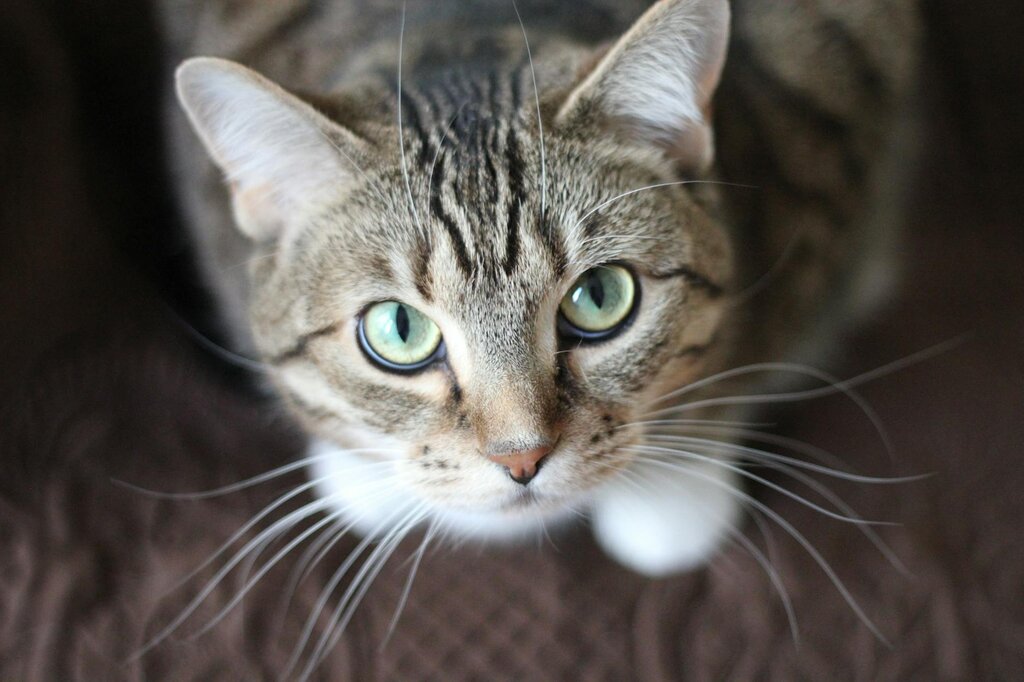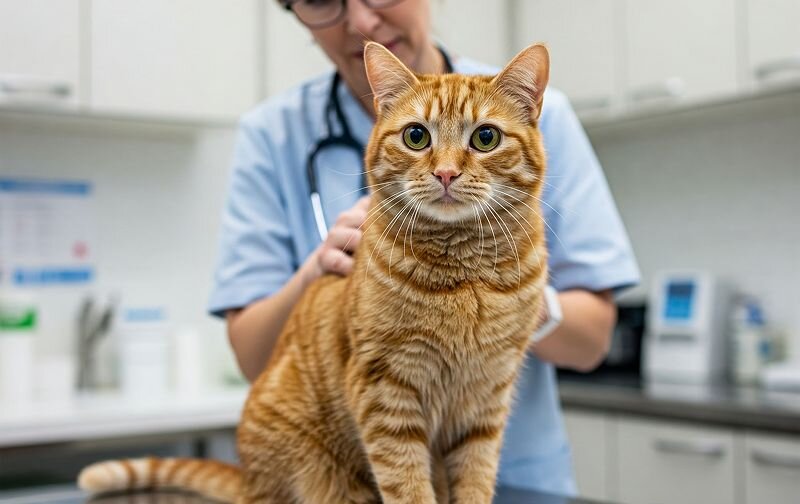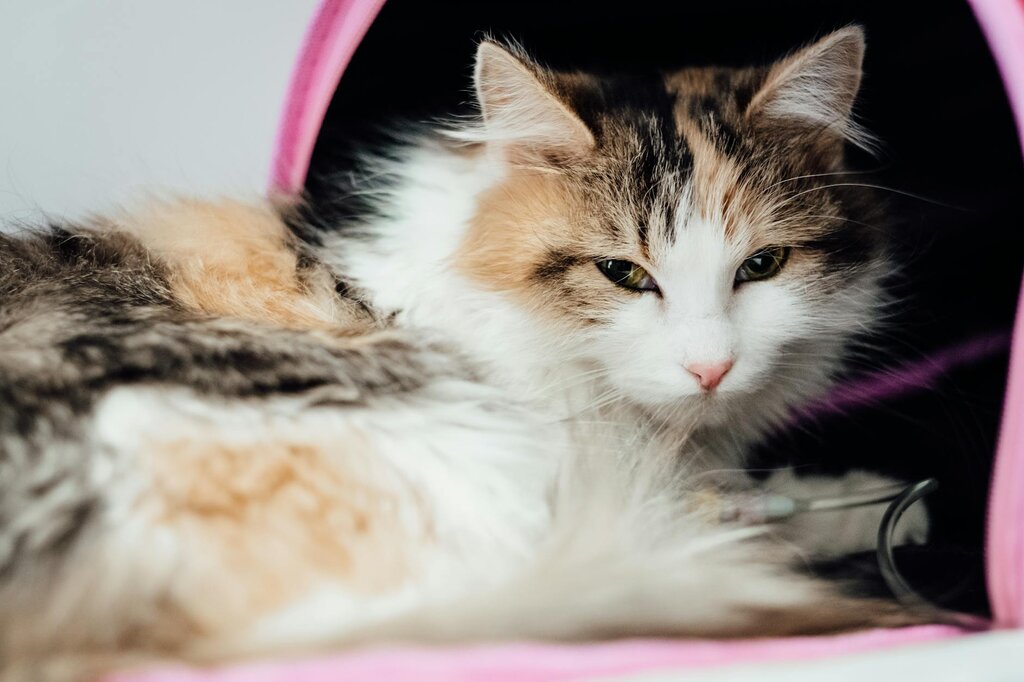Last Updated: 04/11/2025
FIP in Cats: Causes, Signs and Treatment
Feline infectious peritonitis (FIP) is a serious viral disease in young cats, caused by a mutated coronavirus. While once fatal, new treatments are now available in Australia. Our vet guide explains the 'wet' vs 'dry' signs, diagnosis, and treatment.
Author: Dr Samantha Wycherley BVSc
Reading Time: 8 minutes - short read
For any cat parent, the acronym "FIP" has historically been one of the most terrifying diagnoses to receive. Feline Infectious Peritonitis (FIP) is a serious and complex viral disease that affects cats worldwide, most commonly seen in young cats under two years of age.
For decades, a FIP diagnosis was devastating for owners and veterinarians alike, as the disease was considered almost invariably fatal. However, the outlook for this disease has completely changed.
Thanks to recent and significant advancements in antiviral medicine, FIP is no longer the death sentence it once was. Effective, legal treatments are now available in Australia, offering real hope and a path to recovery for many affected cats. This guide will explain what FIP is, the signs to look for, how it's diagnosed, and the new treatments that are making recovery possible.
What is FIP?

FIP stands for Feline Infectious Peritonitis. It is a serious and complex viral disease in cats, which, until recently, was almost always fatal.
How do cats get FIP?
FIP is caused by a mutation of a very common virus called Feline Coronavirus. It’s important to note straight away that this is not the same virus that causes COVID-19 in people; Feline Coronavirus cannot be passed from cats to humans.
The feline coronavirus itself is extremely common in cat populations worldwide, especially in multi-cat environments like shelters or breeding catteries. In most cats, it is harmless, causing either no signs at all or just a mild, temporary bout of diarrhoea.
However, in a very small and unlucky percentage of infected cats, the virus undergoes a spontaneous mutation inside the cat's body. This mutation allows the virus to change its behaviour, escape the gut, and infect white blood cells. These infected cells then travel throughout the body, triggering a severe and aggressive inflammatory reaction in various organs. This severe, systemic inflammation is the disease we call FIP.
While FIP can technically affect a cat of any age, it is overwhelmingly a disease of the young, with most cases diagnosed in cats under two years old.
What are the signs of FIP?

Diagnosing FIP can be challenging because the signs in the early stages are often vague and non-specific. You might simply notice your cat isn't quite themselves.
Common early signs of FIP include:
- Lethargy: Your cat may be sleeping more or seem unusually tired.
- Reduced appetite: They might be less interested in their food or stop eating altogether.
- Fever: A persistent fever that doesn't respond to antibiotics is a common finding at the vet clinic.
As the disease progresses, FIP tends to present in one of two distinct forms: the 'wet' form or the 'dry' form.
'Wet' (Effusive) FIP
This form is characterised by the build-up of a thick, sticky, yellow fluid in the body's cavities. The most common sign is a very swollen, 'pot-bellied' appearance as fluid accumulates in the abdomen. This fluid can also gather in the chest, which can lead to difficulty breathing.
'Dry' (Non-Effusive) FIP
In the dry form, this fluid build-up does not occur. Instead, the disease causes severe inflammation within the body's organs. This inflammation can lead to a wide range of signs depending on which organs are affected.
Signs can include:
- Seizures or neurological issues if the brain is involved
- Changes detected on blood tests if the inflammation affects organs like the liver or kidneys
How is FIP diagnosed?

One of the most challenging aspects of FIP is that its diagnosis is not straightforward. There is no simple, single blood test that can definitively tell you "yes, this cat has FIP."
Instead, a veterinarian must piece together multiple clues from the cat's history, signs, and a range of diagnostic tests. A diagnosis is typically made when all these pieces of evidence point strongly in the same direction.
Here are the key diagnostic steps a vet will usually take to build a case for FIP:
- Clinical Picture: This includes the cat's signalment (most cases are in cats under 2 years old) and history (such as coming from a multi-cat environment like a shelter or cattery). This is combined with the physical exam findings, like a persistent fever, weight loss, or fluid in the belly.
- Blood Tests: Routine blood work can show characteristic inflammatory changes. Vets specifically look for high levels of total protein and globulins (the proteins associated with inflammation) and a low albumin-to-globulin (A:G) ratio. While not specific to FIP, these markers are a significant red flag.
- Diagnostic Imaging: X-rays or, more commonly, an ultrasound scan are used to look for evidence of the disease. In 'wet' FIP, this will confirm the presence of fluid in the abdomen or chest. In 'dry' FIP, the vet will look for inflammatory nodules (called granulomas) on or in organs like the kidneys, liver, or lymph nodes.
- Fluid Analysis (for 'wet' FIP): If there is fluid in the abdomen or chest, sampling it is one of the most useful tests. This fluid is collected with a needle (a procedure called abdominocentesis or thoracocentesis). FIP fluid has a classic appearance - it's typically a thick, sticky, straw-coloured yellow. Laboratory analysis of this fluid often reveals high protein content and a specific type of inflammatory cells, making a diagnosis of FIP highly likely.
A veterinarian will combine all these findings to make a strong presumptive diagnosis. While a 100% definitive diagnosis often requires an invasive tissue biopsy, a presumptive diagnosis based on these combined tests is considered more than enough evidence to begin treatment.
Is FIP contagious?
FIP is a mutated version of the feline coronavirus. Feline coronavirus is a highly contagious disease however the mutated version is not contagious. Whilst this does mean that one cat can pass the mild and common coronavirus to another it is very rare for it to mutate and cause FIP.
Can FIP be treated?

A few years ago the answer to this question would have been no - FIP used to be almost invariably fatal and it was a devastating diagnosis. However, recent advances in medicine have uncovered a drug called Remdesivir which can, in many cases, cure FIP. Remdesivir works by preventing viral RNA replication.
This medication, which has previously been difficult to source legally, is now legal and available in Australia.
While the antiviral medication is the main treatment, excellent supportive care is also essential. This includes providing nutritional support to encourage eating (especially for cats with a poor appetite) and managing any other concurrent health issues.
Close and frequent monitoring by your vet is a critical part of the treatment plan to ensure the medication is working and your cat is responding well.
This monitoring will involve:
- Regular vet check-ups: Your vet will need to physically examine your cat often to track their progress.
- Follow-up blood tests: Expect to visit the vet for blood tests at key intervals, such as 6-8 weeks into therapy and again at the 10-12 week mark. These tests are the main way to see how the body is responding internally.
- What vets look for: Positive signs include your cat gaining weight, their energy levels returning to normal, and their blood test results improving. Specifically, vets look for a decrease in the inflammatory proteins (globulins) in the blood and an improvement in red blood cell count.
FAQs
A diagnosis of FIP is complex and can be overwhelming for any pet parent. The most important takeaway is that FIP is no longer the fatal diagnosis it once was. Real hope for recovery now exists thanks to new antiviral medications like Remdesivir.
If you are concerned your cat may have FIP, or they have recently been diagnosed, speak immediately with your vet to discuss the latest treatment and diagnostic options available.
Articles recommended for you
Our vet authored guide to the benefits of feeding your dog fresh food plus tips and advice for introducing it into their regular menu.
See our guide to protecting your pet from parasites from our vet team.
Thinking of getting a fish? Check out our guide for setting up a tank and home care tips!
Looking to understand horse feeds better? This comprehensive guide covers feeding recommendations for horses of all ages and disciplines.
Does your pet suffer from anxiety? Check out our Vet-guide for treatment options to help your pet.
History
Our experts continually monitor the health and wellness space and we update our articles when new information becomes available.
Tue 4 Nov 2025
Edited by Dr Gillian Hill BVSc (Hons)Dr Samantha Wycherley BVSc
Contributing Author, BVSc
Dr Samantha works as a companion animal veterinarian in Melbourne. Graduated from Massey University in New Zealand in 2015. I have worked in NZ, across the UK and in Australia. Special interests include wildlife and senior pet medicine.

